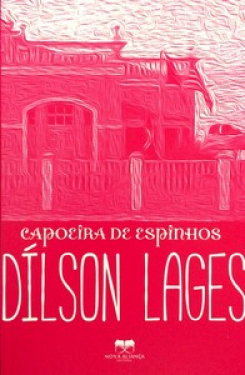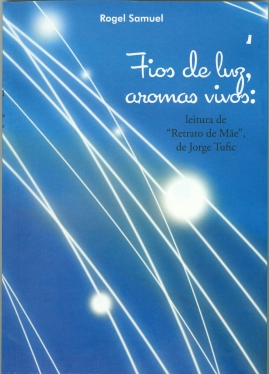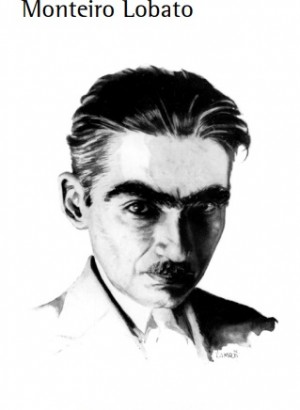Grandes atores do cinema
 Por Flávio Bittencourt Em: 22/01/2013, às 08H37
Por Flávio Bittencourt Em: 22/01/2013, às 08H37
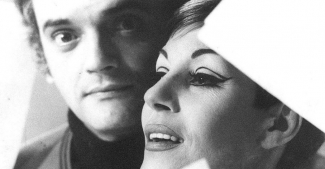
[Flávio Bittencourt]
Grandes atores do cinema
Fotografias
EM 1967, WALMOR CHAGAS E CACILDA BECKER
"O ETNÓLOGO, ICTIÓLOGO E VETERINÁRIO DO MINISTÉRIO DA AGRICULTURA DR. NUNES PEREIRA CHAMAVA DE BOGART - com a pronúncia francesa dele-Nunes, 'Bogár', e não 'Bôgart' - O MEU SAUDOSO TIO POR AFINIDADE ARISTIDES RODRIGUES DINIZ (MARIDO DE MINHA TAMBEM SAUDOSA TIA MARIA DE LOURDES A. L. DINIZ), PORQUE ELE ERA PARECIDO COM AQUELE GALÃ DE CINEMA"
(O responsável por esta Coluna "Recontando...")
EDWARD G. ROBINSON (1893 - 1973):

(http://www.wunderkammermag.com/arts-and-culture/hollywood-ugly-edward-robinson)
HUMPHREY BOGART (1899–1957)
(http://www.imdb.com/name/nm0000007/)
JAMES DEAN (1931 - 1955), ATUANDO:

(http://modethemen.blogspot.com.br/2010/06/james-dean.html)
CLARK GABLE ( - )
(http://www.sauceforthoughts.dreamhosters.com/wp/?p=2863)
KIRK DOUGLAS:

(http://www.celebritiesheight.com/kirk-douglas-height-and-weight/)
SAL MINEO (Salvatore Mineo Jr., 1936 - 1976)
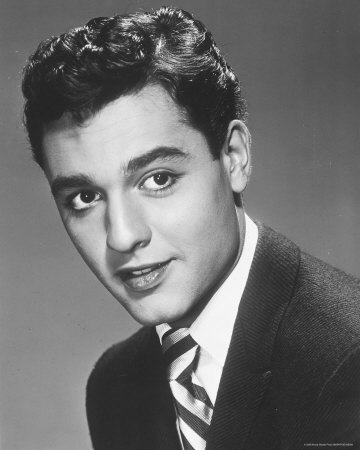
(http://www.filmbug.com/db/1035)
WALTER FOSTER:

(http://www.famososquepartiram.com/2011/04/walter-forster.html)
SAMMY DAVIS JR. (1925 - 1990)

(http://tsutpen.blogspot.com.br/2009/01/before-and-after-162-sammy-davis-jr.html)
SIR SIDNEY POITIER, KBE É AGRACIADO COM
IMPORTANTE MEDALHA PELO PRESIDENTE
BARACK OBAMA, QUE APARECE DE COSTAS
NESSA FOTOGRAFIA CAPTADA NO MOMENTO
POSTERIOR AO ATO SOLENE DA CONDECORAÇÃO:

WALMOR CHAGAS, QUE EM 1973 RECEBEU O
PRÊMIO MOLIÈRE (BRASIL) DE MELHOR ATOR:

(http://www.bemparana.com.br/noticia/243772/morre-ator-walmor-chagas-aos-82-anos)
===
RICO'S END:
“The best actor never to win the ®Oscar!”
Edward G. Robinson (1893–1973)
Eddie never got the Oscar he so richly deserved, noting especially his chilling performance as Wolf Larsen in The Sea Wolf, a pity! He must be regarded as one America's finest film actors. In Caesar Enrico Bandello, he created the prototype for the modern American movie gangster. For the wonderful memories he gave me, this site if dedicated. Information about Eddie is extremely difficult to obtain, any additions are welcome.

Emanuel Goldenberg, forceful, authoritative character star of Hollywood films, memorable for his tough impersonation of gangster boss Rico Bandello in Little Caesar (1930) and many other characterizations of underworld types in Warner’s crime cycle of the 30s. In the US from age–10, he grew up on New York’s Lower East Side and gave up plans to become a rabbi or a lawyer in favor of acting during studies at City College, where he was elected to the Elizabethan Society. He won a scholarship to the American Academy of Dramatic Arts and, changing his name to Edward G. (for Goldenberg) Robinson, began appearing in stock in 1913. He made it to Broadway in 1915 and over the next 15 years appeared with increasing recognition in a wide variety of plays, including The Kibitzer (1929), a three–act comedy that he also wrote with Jo Swerling. He made an isolated film appearance during the silent era, playing a supporting role in The Bright Shawl (1923), but it was only after the advent of sound that he began to be seen regularly in movies. After his great success with Little Caesar (1930), a performance that became a prototype for screen gangster portrayals, Robinson was typecast for several years in similar roles, but he gradually broadened his range and proved himself a highly skilled actor in a great variety of parts. He gave memorable performances in two screen biographies Dr. Ehrlich’s Magic Bullet (1940), the story of the German scientist who developed a cure for venereal disease, andA Dispatch From Reuters (1940), the chronicle of the man who pioneered the telegraphic news agency. Some of his best portrayals where in psychological dramas of the 40s, notably Flesh and Fantasy (1943), Double Indemnity (1944), The Woman in the Window (1944), and Scarlet Street(1945).

Robinson’s personal life was beset by problems in the 50s. Despite a well–known record of activity for patriotic causes during and after WWII, his name was linked by Red Channels with Communist–front organizations. He was called to testify before the House Un–American Activities Committee but was cleared of all suspicion and won a clean bill of health. In 1956 he was forced to sell his famous art collection, one of the world’s largest privately owned, as part of his divorce settlement with his wife of 29 years, actress Gladys Lloyd. During this period he was also troubled by the maladjustment of his only son, who got into frequent frictions with the law and attempted suicide several times. Despite the personal setbacks, Robinson continued his busy acting career on television as well as in films. In 1956 he returned to Broadway after a long absence, scoring a success in the role of an elderly widower who marries a young bride in Paddy Chayefsky’s Middle of the Night. His film appearances during the 60s were mainly in the supporting capacity. In the Academy Award ceremonies that took place shortly after his death of cancer in 1973, Robinson was awarded a special Oscar in recognition of his achievements in films, in a magnificent career that spanned five decades of cinema. His life provided the basis for the 1979 play Manny, by Raymond Serra, who also played the title role.
New York Times, January 27, 1973: By ALDEN WIMAN
“HOLLYWOOD, Jan. 26, Edward G. Robinson, whose tough, sinister appearance on movie screens concealed the soul of a gentle man, died today at the age of 79. Robinson succumbed at Mount Sinai Hospital where he had undergone tests in recent weeks. The cause of death was not immediately determined.”

“Edward G. Robinson was a skilled actor of the stage and screen whose vivid portrayal of motion picture gangsters, among them Little Caesar, during the nineteen–thirties marked powerful mobsters who ruled the underworld during the Prohibition era. So effective was Robinson interpretation of the gangster that many of the underworld characters found themselves affecting the Robinson character chomping down on cigar butts while snarling orders out of the sides of their mouths.”
“But while Robinson was making his mark on others, he himself, remained strangely unaffected. In real life he was a man of great kindness and courtesy whose generosity scarcely knew bounds. Between 1939 and 1949 he made more than 850 contributions totaling $250,000 from relief and entertainment agencies, to cultural educational and religious groups. His art collection comprised perhaps the outstanding group of privately owned paintings in the United States. During the course of a marital settlement it was sold in 1957 for $3,250,000.”
“Robinson was born Dec,. 12, 1893, as Emanuel Goldenberg in Bucharest, Rumania. One of Robinson’ brothers was hit on the head with a rock during a schoolboy pogrom and years later, in America, died probably from the effects of the blow. To escape this persecution the family managed to scrape together the fare for steerage passage and came to the United States. “At Ellis Island I was born again,” Robinson wrote later. “Life for me began when I was 10 years old.”
Made Speeches to Friends
As a boy, as soon as he had mastered English, he made speeches to his family and friends. His favorite was Theodore Roosevelt’s second inaugural address, which he had committed to memory. He hoped to become a criminal lawyer “to defend the human beings who were abused and exploited.” With this purpose he entered Townsend Harris High School and after that City College. It was at City College that the youth decided to forego his law career to be an actor. He loved to perform before people. But Robinson’s study of the theater told him that there had been many little men in the theater. He won a scholarship at the American Academy of Dramatic Art with a sizzling and effective delivery of the Brutus and Cassius quarrel scene from Julius Caesar.

He was 19 when he entered dramatic school and shortly thereafter changed his name to Robinson “a name I had heard while sitting in the balcony of the Criterion Theater.” He played in stock in Cincinnati, in vaudeville as a Chinese man in a skit at Hammerstein’s. He finally broke into the legitimate theater in 1915 in a play called Under Fire. He got the part because he was multilingual, an attribute called for in the script. Role followed role and the youngster received many good notices. He joined the Theater Guild and played a great variety of roles. In such productions as The Adding Machine,The Brothers Karamazov, Right You Are, If You Think You Are, and Juarez and Maximilian. He was starred for the first time in The Kibitzer, a play of which he was the co–author. In January, 1927, Robinson married Gladys Lloyd, an actress.
Robinson had experimented with several screen roles in silent pictures but he was not happy with the result. With the addition of sound to the shadows, however, Robinson’s interest was renewed and he tried his first talking–picture The Hole in the Wall, There followed The Widow from Chicago and a short time later, in 1931, Little Caesar. Of Little Caesar a critic for The New York Times wrote:
“Little Caesar becomes at Robinson’s hands a figure out of a Greek tragedy, a cold, ignorant, merciless killer, driven on and on by an insatiable lust for power, the plaything of a force that is greater than himself. The film contained a climatic line that itself became a classic, Little Caesars parting words as he lay slumped under a billboard after he had been shot by the police…”
“Mother of Mercy, is this the end of Rico?”

It was sometimes said that Robinson was selected to play the role of Little Caesarbecause of a resemblance to Al Capone, the Chicago vice baron. Robinson doubted this theory, and there was no real–life resemblance. Hollywood makeup artists, however, always managed to make Robinson look as sinister as Capone was reputed to be. A more reasonable theory was that Hollywood sought him out because of his success as Nick Scarsi, a character in !splay called The Racket. is play was so real, Robinson once remarked, that it could not be produced in Chicago, in any event, his portrayal of Little Caesar came to be considered a classic, and there followed others in the curled lip mold Smart Money, Five Star Final, Bullets or Ballots,
The actor thought Five Star Final, one of his finest tough guy pictures. In it he played Randall, the editor of a muckraking tabloid. This film, released in 1931, along with many of his other movies, has been revived from time to time on television. Robinson’ first real departure from his two–fisted type of role on the screen was Dr. EhrlichMagic’s Bullet in 1940, and even this film about syphilis was billed as “the war against the greatest public enemy of all.”
Appeared in 100 Films
From 1929 to 1966 Robinson appeared in more than 100 films. His name, until recent years, usually meant good box office. in all, his films grossed well over $50–million, and this figure is a modest estimate. His own earnings were high and he lived appropriately. Robinson was the first Hollywood star to entertain in France after the invasion of Normandy. He sold war bonds and it was said he turned his regular weekly radio dramatic show Big Town into a soap box in favor of the American way. The American Legion gave the program a citation and he was commended for his “outstanding contribution to Americanism through his stirring patriotic appeals…” But because he had allowed his name to be linked with so many causes, inevitably there were those with a Communist tinge. Robinson was named in Red Channels in connection with 11 Communist front organizations. But Robinson carried his case to the House Un–American Activities Committee and eventually won a clean bill of health.

After 28 years as a movie actor Robinson returned to the stage inMiddle of the Night and scored a success. At the age of 63 he was a forceful and vital figure on the stage and the youthful cast said that they found it difficult to match his boundless energy. In Middle of the Night he portrayed an aging widower who married a much younger woman. Early in 1958, while he was still appearing in the Paddy Chayefsky play, Robinson was married to Jane Bodenheimer, a 38–year–old dress designer known professionally as Jane Arden.
After his stage success, the actor performed occasionally on television and played featured roles in several other movies. In all he appeared in 40 Broadway plays and more than 100 films. Among his most recent movies were A Boy Ten Feet Tall, Cheyenne Autumn, The Cincinnati Kid andSammy Going South. It was while making this picture in 1964 that he suffered a mild heart attack.
Robinson was an excellent actor and was to have received a special Oscar for his “outstanding contribution to motion pictures” at the Academy Awards ceremony March 27, It would have been his first Oscar.
(http://moderntimes.com/egr/)







